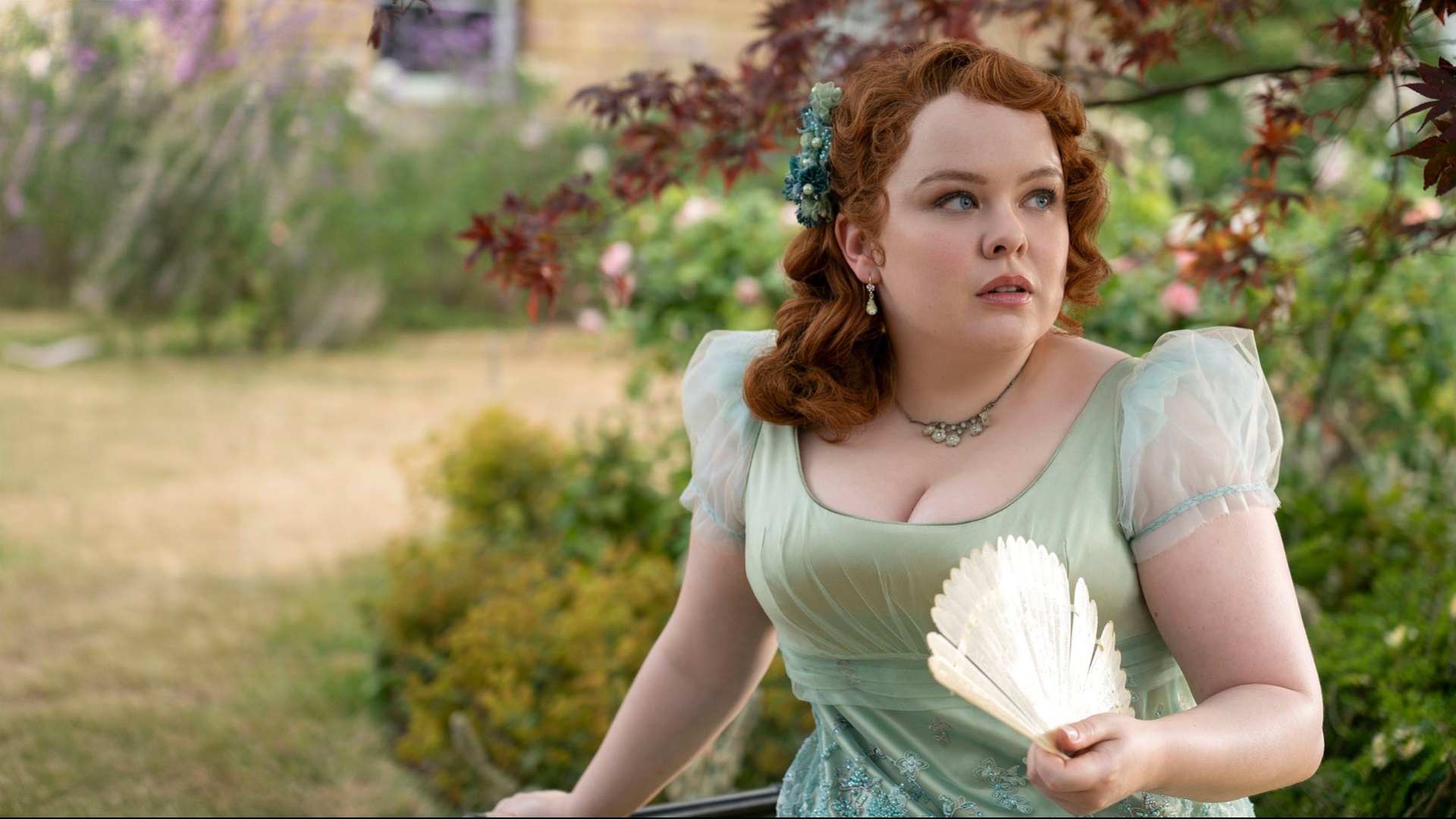Has it really been more than two long, arduous years since the second season of everyone’s favourite steamy Regency romance graced our Netflix queues? By now, fans are well acquainted with the scandal, seduction, and salacious court gossip that are the motor that runs Bridgerton’s engine, and they will not be disappointed to know that the opening volume of the third season serves up more of the same, but with a divergently complex leading lady at its centre.
Nicola Coughlan’s masterful portrayal of Penelope, who has thus far weaponised her wit and way with words to keep a cruel world at bay, elevates the script from a regular romance plot. In this season, she allows her mask to slip, revealing the lovelorn woman that lies beneath. There is an inherent vulnerability that is part and parcel of revealing romantic feelings to someone who you’re afraid will always see you as a friend, and Coughlan is pitch perfect in every scene—the audience has no choice but to feel every skipped beat in Penelope’s heart as she navigates a romance that is rife with uncertainty and Shakespearean misunderstanding. The subversiveness of having Penelope ask to be kissed rather than wait for it to happen is not lost on the audience, and the show does well to grant its most rebellious female character the kind of agency that was impossible for a woman of that period to have.
The big issue
But perhaps the most radical aspect of this season of Bridgerton, which drew a lot of press during its debut season for its race-blind and historically inaccurate casting, is the fact that it goes somewhere that no Regency romance has dared go before—to a world where one does not have to have a waifish figure to be deserving of love. On TV or films, and in pop culture in general, plus-sized women are relegated to supporting roles—portraying the token friend or sidekick or that goofy klutz added for comic relief, not Rubenesque figures who control the narrative. It is hard to look across the cannon of 19th-century romance and point to one other instance where a woman of Coughlan’s proportions has been crowned the romantic lead, and it cannot be overstated how long overdue this development has been—especially in light of the fact that most women’s bodies in Regency-era England were more likely to resemble Coughlan’s than that of Keira Knightley.

It’s entirely unacceptable, but not surprising—given what we know of the internet and its resident trolls—that Coughlan has faced a barrage of negative comments about her body from alleged fans, to the extent that she posted the following statement (now removed) on Instagram in 2022: “If you have an opinion about my body, please, please don’t share it with me. It is really hard to take the weight of thousands of opinions on how you look being sent directly to you every day.” And like any great artist, Coughlan’s real clapback comes via the creative decisions she helped drive during Bridgerton’s newest season, namely the choice to be “very naked on camera.”
Despite the body diversity we sometimes see on film and television today, it isn’t hard to recall a time when anyone who didn’t resemble a Victoria’s Secret angel was treated as unlovable and ugly. This gives Coughlan’s insistence on not censoring her body, a whole new radical dimension. “It just felt like the biggest ‘fuck you’ to all the conversations surrounding my body,” she said, adding that it was “amazingly empowering” to see herself portrayed as a desirable romantic lead in various states of (glorious) undress.
Turn the page
I am usually a purist when it comes to film adaptations of novels, but Bridgerton’s masterstroke comes via its decision to veer away from Julia Quinn’s book by not making Penelope’s body a conversation to begin with. The only negative comments towards Penelope’s figure come from her mother, and it is made clear that the show does not agree with Lady Featherington on this. In the original book, Penelope is written as having lost two stone (around 12kg) by the time she is noticed by Colin, further engendering the idea that thinness is directly proportional to desirability.
Indeed, in the romantic filmverse, the pivotal makeover meant to transform the ‘ugly duckling’ into an appropriately polished heroine is usually just a montage of rapidly moving flatirons and applications of flattering lip colours (think The Princess Diaries), but Penelope’s new form is more subtle—Bridgerton triumphs in its decision to keep the changes small rather than dramatic, as is evident in Penelope’s dresses moving away from typically gaudy Featherington hues to quieter, more romantic pastels. Colin barely notices Penelope’s new look aside from a lone comment on her “fetching” gown, which is another deviation from the norm—he is not bowled over by her fresh avatar, because he has always implicitly thought of her as beautiful. The ‘makeover’ does more for Penelope, giving her a new outward confidence and attracting the envy of her former bullies, than it does for her paramour.
There was a time when the entertainment industry deemed that having a full-bodied woman in the spotlight spells disaster, and happily, we are no longer living in such a time—thanks, in no small part, to characters like Penelope and the global appeal that they have proven to have. In the same way that Regé-Jean Paige and Simone Ashley heralded a new dawn for racial diversity in what were once all-white period dramas, Bridgerton has now thrown down the gauntlet for greater body diversity in its heroines. As for Coughlan’s trolls, perhaps they will be silenced by the knowledge that the opening volume of Bridgerton’s third season is currently the most-watched show on Netflix the world over.



